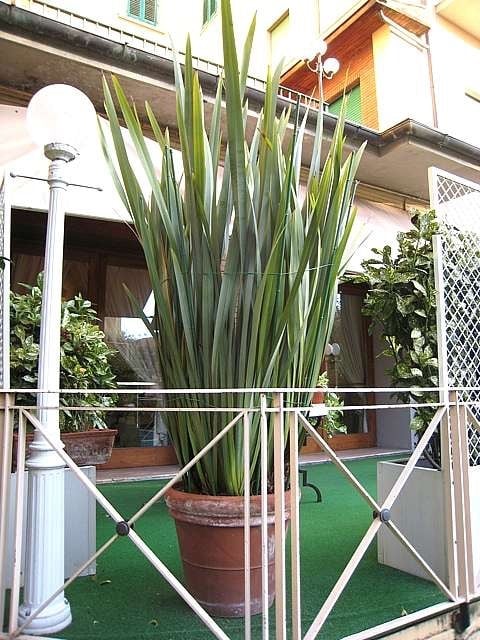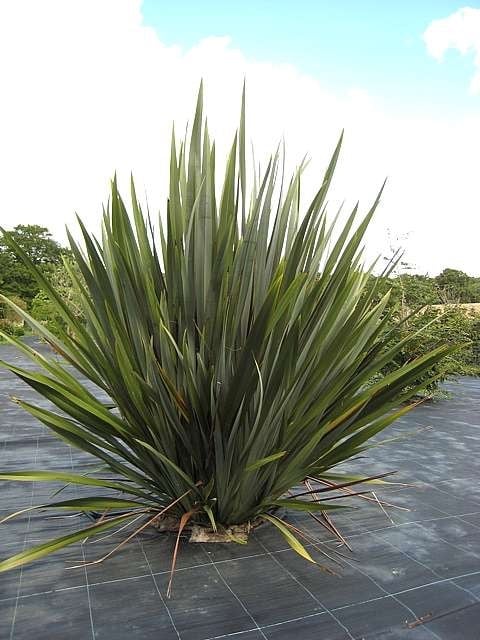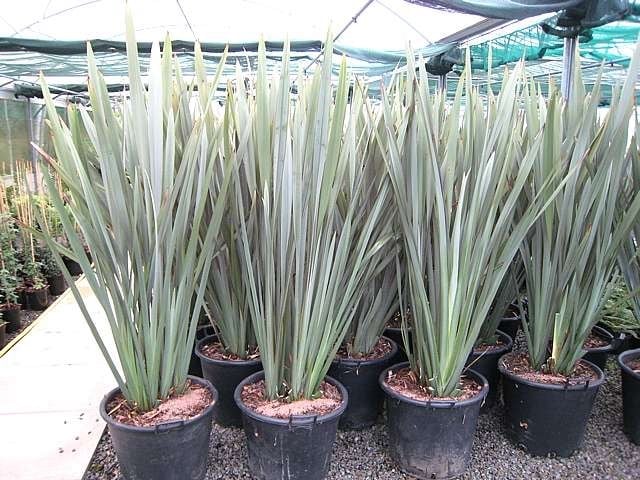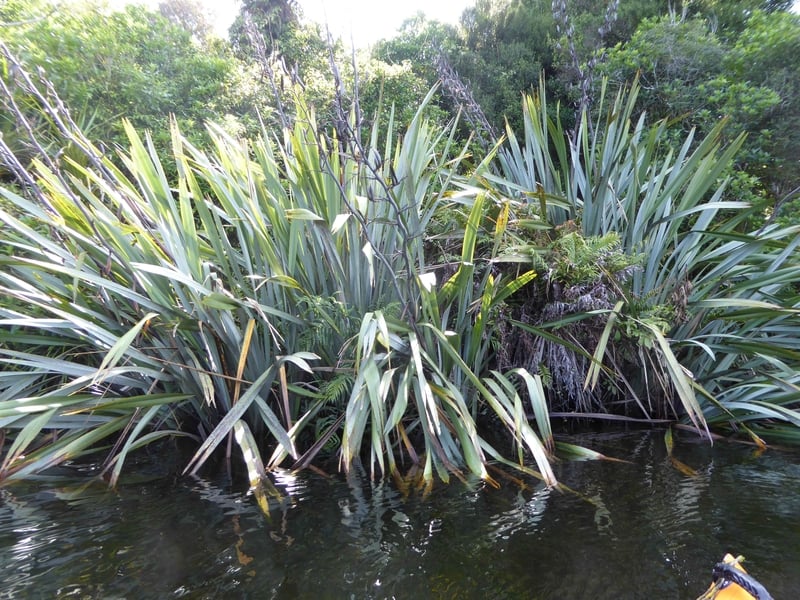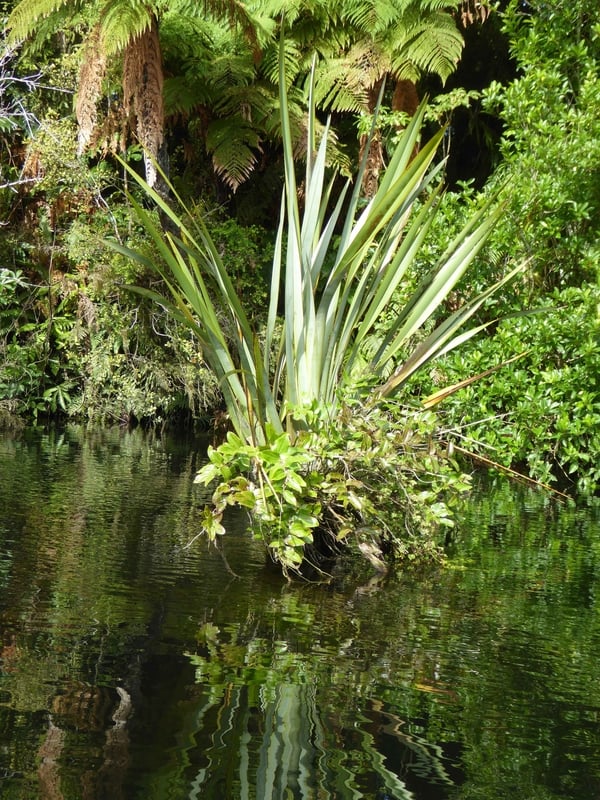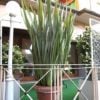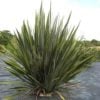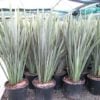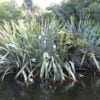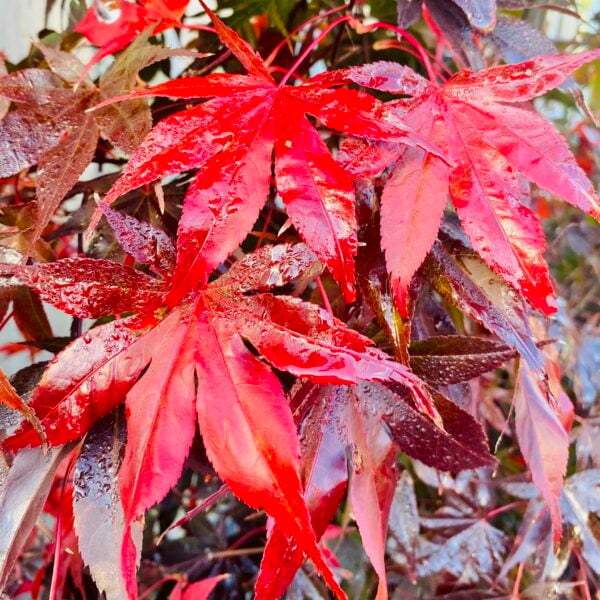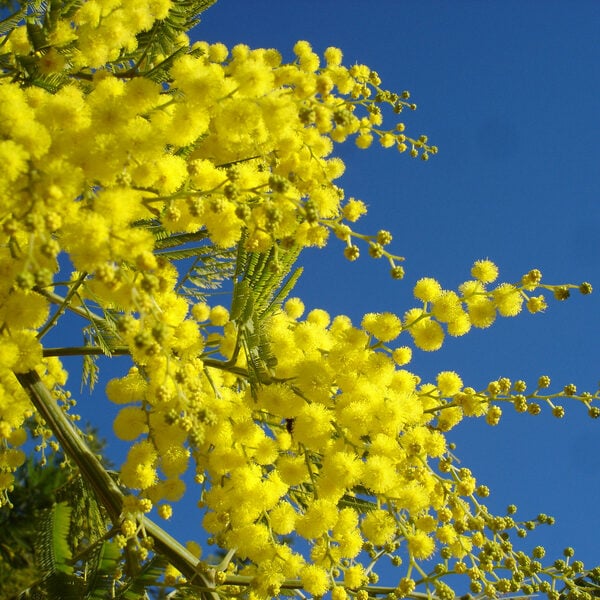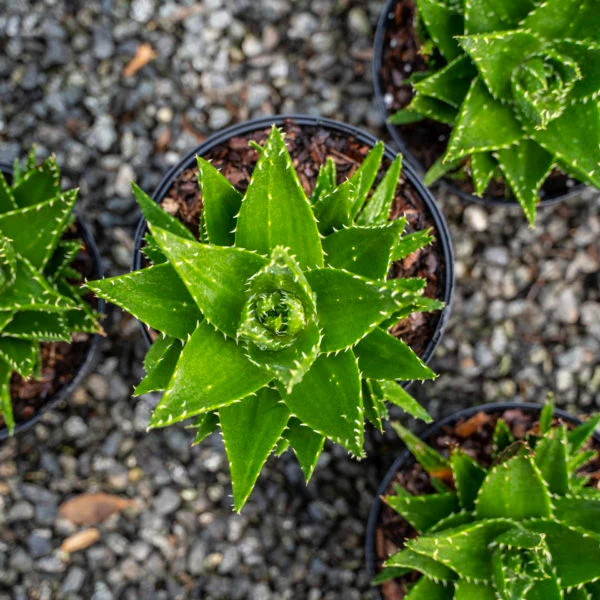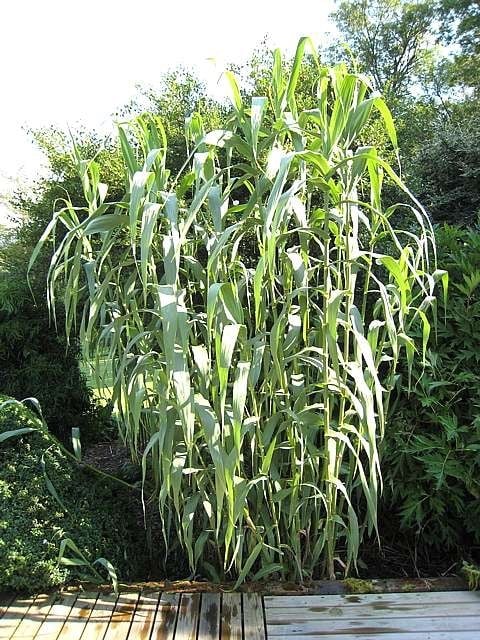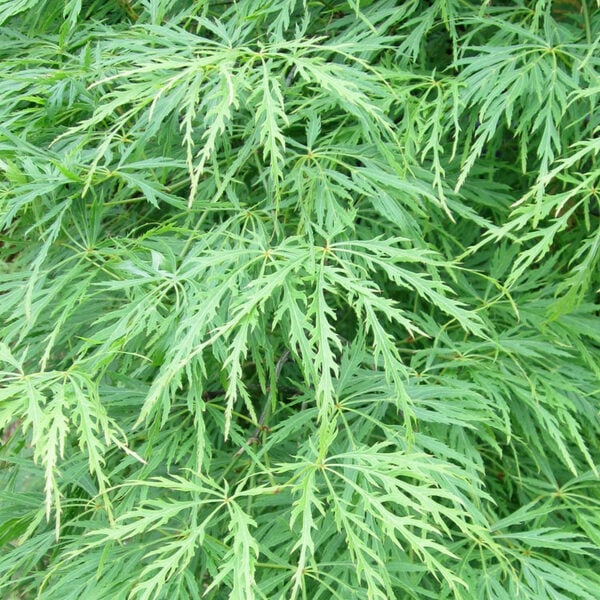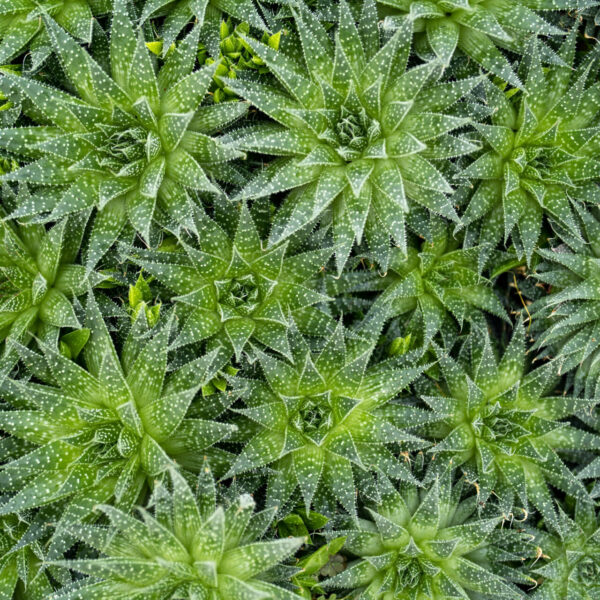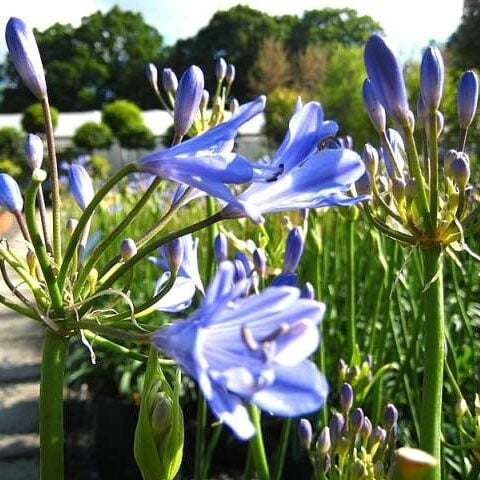Phormium tenax ‘Croce di Malta’ (New Zealand Flax)
Our own form of Phormium. Hardy with straight narrow green upright leaves to 7ft with 10ft flower spikes. Explosive in aspect. To 7ft with 10ft flower spikes. Please contact us for stock availability and sizes.

Hardiness level Green
Glaucous, erect and spiky are the hallmarks of the New Zealand Flax (Phormium tenax). Green, soft, floppy and luxuriant are the hallmarks of the less well known Mountain Flax (Phormium cookianum). This can grow to 7ft tall x 4ft wide with flower spikes to 10ft and is pure drama.
All Phormiums (whether P. tenax or P. cookianum) are described by proper botanists as having a 'broad genetic base'. This means highly variable and incredibly unpredictable. Sow 1000 seeds and hardly any will be the same; they will vary both in the way they look and their frost hardiness. This plant is remarkably frost hardy and is propagated by division - so they're all the same plant. We find the broad leafed forms of Phormium less hardy than the narrow leafed and more erect forms. A well grown one of these is an explosion. They remind me of my drawings of tanks blowing up. I haven't done a drawing of a tank blowing up for quite a while but I suspect that were I to be called upon to do one now, it would still look like a particularly fine example of a New Zealand Flax. We call them Phormium tenax. Kiwis call them Flax Bushes - usually in a rather unexcited tone of voice. It's true that there are an awful lot of Flax Bushes in New Zealand but we still get quite excited by them here in Blighty.
Phormiums don't like shade and they're very good in the wind so exposed spots are good. Creative Maintenance on these is time consuming but worthwhile. Remove old leaves and flower spikes with sharp secateurs or a sharp knife. Sometimes the leaves on this plant can be pulled off using two hands and a good sharp tug. Look out for Mealy Bug as you go. They're an aphid that looks like a tiny white Wood Louse that loves living in the bases of all Phormiums. They produce copious quantities of white fluffy stuff which is always a dead giveaway. The plants will tolerate their presence but best to kill them if you can. Religious use of a bug gun should do the trick. Stick them with your marlin spike and they're red inside. Blood? They're related to the Cochineal beetle (they're both considered Scale Insects) which is crushed to make the red food dye Cochineal. Yuck, you may well say. Could you make pink food dye from squished mealy bugs? Probably, but might not bother.
They adapt to a remarkably wide variety of soil - including growing permanently in standing (fresh, not salt) water. The last two photos are of them growing in standing water in Lake Moeraki in South Island, N.Z.
Propagated by division and by micropropagation by us. Can grow to 7ft x 4ft in ideal conditions (rich, well drained soil and plenty of light). From a design point of view, having a source of the same plant (clones) - for mass planting - is a great boon that discerning gardeners appreciate.
Croce di Malta? There's a hotel in Montecatini in Italy called the Grand Hotel Croce di Malta (Maltese Cross). They had a Phormium tenax in a pot by the pool. There's a picture attached. It sat there in its pot, always looking perfect with little effort and I knew it, man and boy. A particularly fine example. Eventually I enquired at reception if it would be okay if I took a little bit of it as it was a plant I admired. I think they said yes just to get rid of me and didn't have the faintest idea what I was talking about but from that one little bit of plant we've produced thousands and thousands and the least we could do was to name it after its hotel home. Nice hotel. Easier to park than some of the hotels in the centre of town.
Severe frost (-4°c or below) will give the leaves a glazed look and the leaves tend to roll up. It can look terminal but it's not. They recover wonderfully well as soon as the temperature rises.
One last thing : the leaves of Phormium tenax produce the strongest known natural fibre known. The Royal Navy had huge plantations of the stuff in Australia and St. Helena Island that provided most of their rope by the late 19th century. Get one caught round the blades of your ride on mower - even if it is a twin cylinder 16 H.P. diesel - and it'll stop it dead. There is some confusion as both Linen Flax (Linum usitatissimum - known as Flax) and New Zealand Flax (Phormium tenax - known as Flax) are used for making rope. Thank God for Latin names.
Additional Information |
|
|---|---|
| Soil Type | |
| Light | |
| Plant Type | Big Leaves / Exotics, Evergreen, Flowers, Grown by Us, Herbaceous |
| Continent of Origin | |
| Specialist Plants | |
| Features | |
| Situation | Coastal, Exposed (To wind and sun), Mild City Gardens, Plants for Pots, Seaside, Sheltered Garden |
| Flower Colour | |
| Hardiness | |





